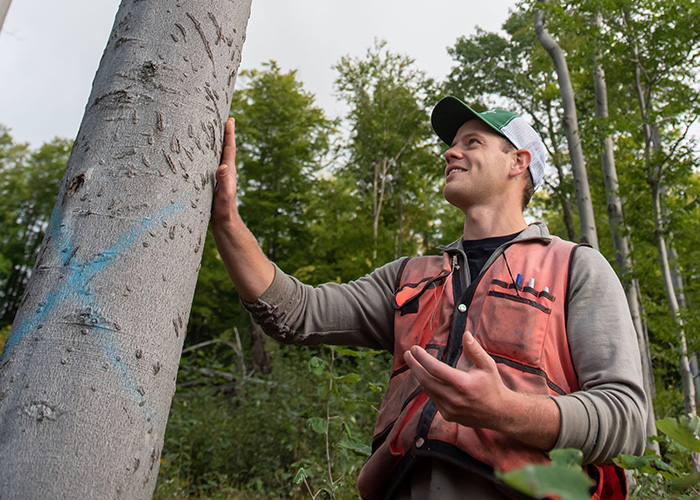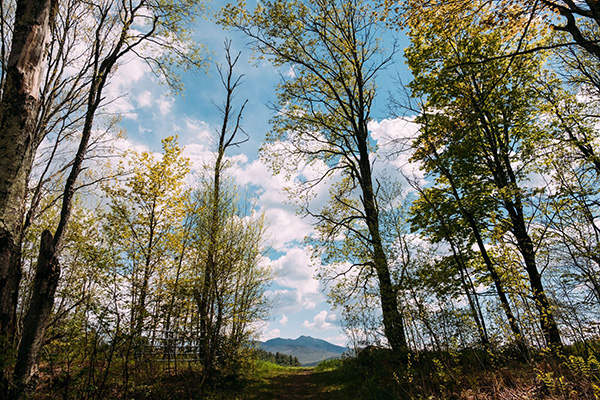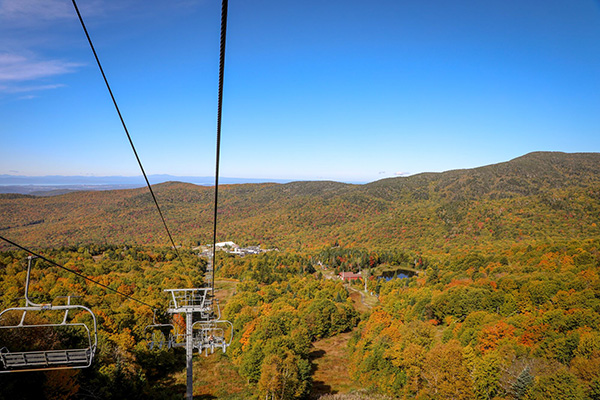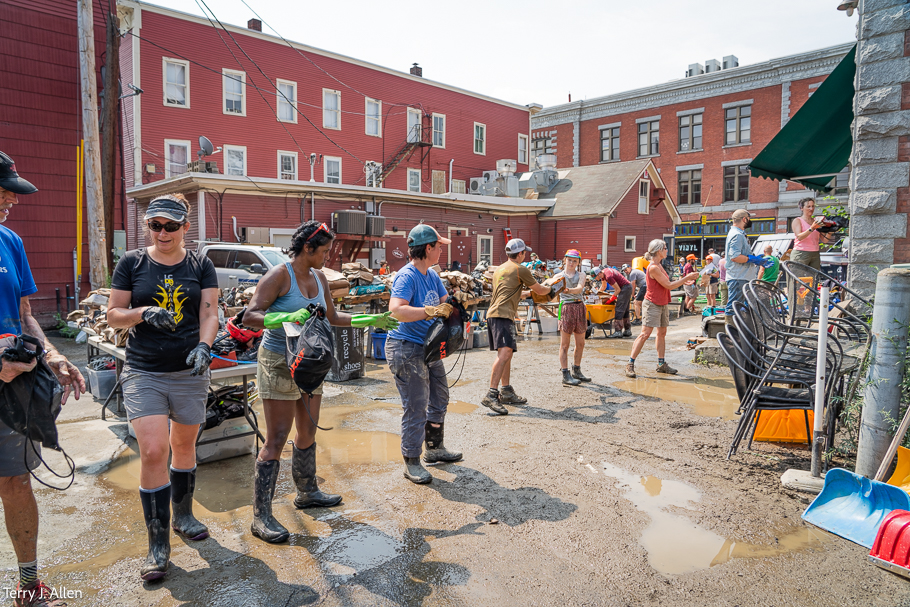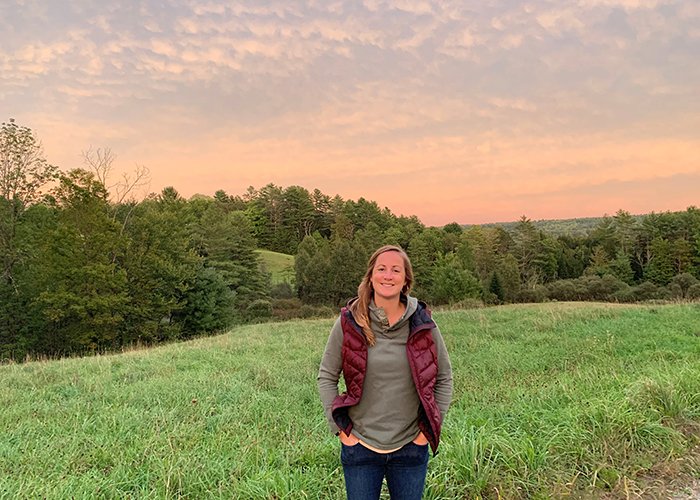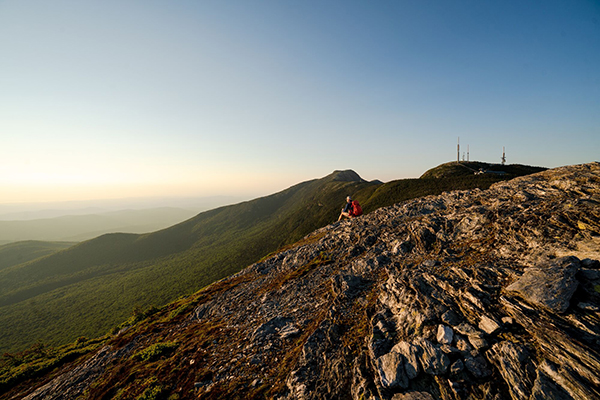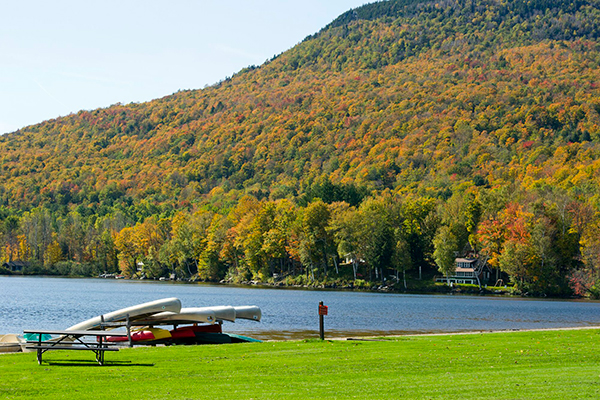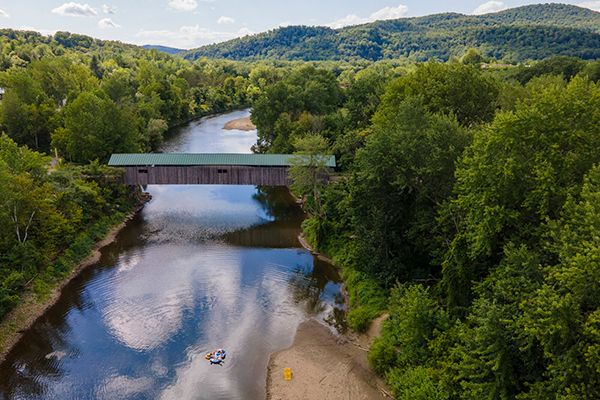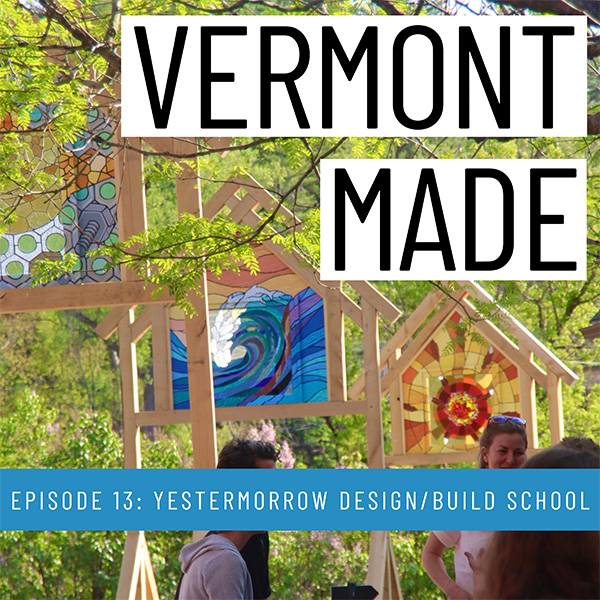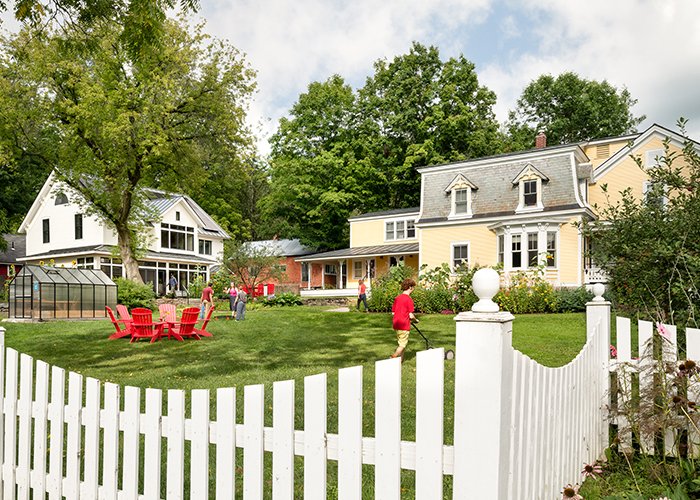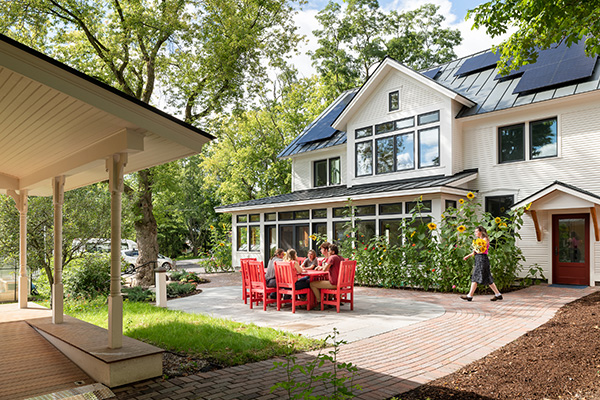
by Shelley Pembroke | Oct 10, 2023 | Forester, Lifestyle
ON THE GROUND IN THE GREEN MOUNTAINS
Vermont’s foresters are charged with overseeing conservation and land management projects in the Green Mountains. That means they get a lot of face time with the stars of Vermont’s renowned fall foliage show, the trees, including red and sugar maples, poplars, beech, and oak. Here, a handful of foresters share their view from the woods as leaves change from green to red, orange, and yellow.
County: Chittenden
How long have you been a forester? 11 years
What makes your region of Vermont forest unique from other areas of the state? While most of Chittenden County remains rural, we are the most populous county in the state, containing about a quarter of its people. Development brings about challenges that pose a threat to our forests’ ability to provide habitat for our native species, to be resilient in a changing climate, and to benefit the culture, the character, the local economies and the ecology of this county. However, I also see the denser population of Chittenden County as an opportunity: here we have a chance to educate more people about the value of our forests and other ecosystems and what it means to take care of them. A lot of my work centers around education and outreach, giving people the tools to understand how to be stewards of our forests, and Chittenden County is the perfect place to do this.

How is the foliage in your region right now? In the last week of September, the trees are just beginning to change colors. We will probably see the foliage pick up steam in very early October, reaching peak foliage around mid-October. The extremely wet summer caused leaf fungi on some trees, resulting in early drop of affected leaves. This happens every year in varying degrees, but once the affected leaves drop, what is left gets to shine, especially given the good weather we’ve been having. My favorite places to see foliage are driving down Nashville Road in Jericho towards West Bolton, on Honey Hollow Road in Bolton, and from the top of Camels Hump!

What do you like to do in your off time in area? In my spare time I manage my own 175-acre forest in Bolton, Vermont with the help of my trusty Timberjack skidder, “Red”. I also play in a 10-piece punk band called The Bubs.
Where would you recommend visitors go? Go see some music and eat some amazing food in Burlington.

by Shelley Pembroke | Oct 2, 2023 | Communities, Podcast
Healthy communities require safe streets and sidewalks; inclusive gathering places and green spaces for everyone to enjoy; and easy access to medical services and fresh food. If you live in a rural town in America, these things can be hard to come by. Join Suzanne Kelley and Richard Amore in Small Towns, Healthy Places, the podcast that explores the intersection between health equity and community design in the State of Vermont. They’ll interview state partners, local leaders, and community members about creating vibrant places that support health and wellness. If you’re passionate about public health, improving the built environment, and placemaking, this podcast is for you.
About this episode
On July 10th and 11th, 2023, Vermont experienced historic rainfall and devastating floods. Maybe you heard about this weather event on the news – or maybe you lived through it.
But you may not know how Vermont’s communities came together during the storms, and over the days that followed. Today, we’re focusing on stories of resilience.
We’ll hear from the Mayor of Barre City, Jake Hemmerick, and the Executive Director of Montpelier’s library, Dan Groberg. We’ll also chat with the Executive Director of Friends of the Winooski River, Michele Braun, and Co-Director of The People’s Farmstand, Nour El-Naboulsi.
Listen to this podcast on Spotify or wherever you get your podcasts.
Visit healthycommunitiesvt.com for more information and to get the full episode transcript.

by Shelley Pembroke | Sep 22, 2023 | Forester, Lifestyle
On the Ground in the Green Mountains
Vermont’s foresters are charged with overseeing conservation and land management projects in the Green Mountains. That means they get a lot of face time with the stars of Vermont’s renowned fall foliage show, the trees, including red and sugar maples, poplars, beech, and oak. Here, a handful of foresters share their view from the woods as leaves change from green to red, orange, and yellow.
Name: Emily Potter
County: Lamoille (plus the Caledonia County towns of Hardwick and Walden)
How long have you been a forester? Since 2012; in Lamoille County since 2020
What drew you to this career? I wanted to be able to work outdoors and spend my life working in a field that would benefit the planet. While studying Forestry, I realized the humbling fact that being a Forester means continuously learning and thinking in “forest time.” Forest time occurs over a much longer time period. The actions we take in the forest today will resonate long after we’re gone.
What makes your region of Vermont forest unique from other areas of the state? Lamoille County is in what’s called the Northern Green Mountains biophysical region. This region of Vermont is distinguished by its upper elevation forests (including Vermont’s highest mountain, Mount Mansfield at 4,393 feet), coldest climate, and greatest annual precipitation. The large undeveloped blocks of forests in Lamoille County are important corridors for wildlife dependent upon remote, unfragmented habitats, and interior forest conditions.

How is the foliage in your region right now? Forests in Lamoille County are warming up to the idea that fall is around the corner. Red maples have started to show off their flashy reds and sugar maples and ash trees are hinting at their golden and purplish hues, respectively. I suggest higher elevation areas to see the first colors of fall. Heading toward Eden and Belvidere is usually a good bet for early color, as is traveling around Mount Mansfield from Cambridge and Stowe. Route 12 between Worcester and Elmore is another area worthy of a drive by just because of the expansive forest.

What do you like to do in your off time in area? I enjoy running year-round, swimming, hiking and biking in the summer; the fall is great for cooler hikes, longer bike rides, rounds of golf. In winter I have a blast cross country skiing and, when winter temperatures are cold enough, ice fishing. My goal is usually just to get outside to enjoy the beauty of Vermont in all seasons; the activity isn’t as important as just being able to appreciate how lucky I am to have the privilege to live in such a gorgeous place.

Where are your favorite places to visit in your area? Paddling on the Lamoille River and at Green River Reservoir State Park; running, walking or biking on the Lamoille Valley Rail Trail; going out to lunch with friends in Stowe or Morrisville; visiting one of the many Farmers’ Markets in Lamoille County; golfing at Copley Country Club or any of the other golf courses in Lamoille County; sampling Vermont beers at any of the many breweries scattered about; or generally just touring the county by car – you won’t find yourself anywhere that isn’t beautiful.

by Shelley Pembroke | Sep 16, 2023 | Arts, Video
In episode 13 of Vermont Made, artist-builders Thea Alvin and Meg Reinhold discuss the new Yestermorrow Design/Build School exhibit Elements of Shelter, on view in the Vermont Arts Council Sculpture Garden through May 2025.
Listen to Yestermorrow’s Elements of Shelter with Thea Alvin and Meg Reinhold
Sharing the fruits of local talent from the Green Mountain State. In each episode of Vermont Made, one artist, craftsperson, designer, specialty food producer, or other Vermont creative shares the story behind one thing they’ve made. Produced by the Vermont Arts Council and hosted by Desmond Peeples.
In 2023 and 2024, Vermont Made is sponsored by the Vermont Department of Tourism and Marketing.

by Shelley Pembroke | Sep 15, 2023 | Communities
Middlebury’s Yellow House Community brings neurodiverse people together to allow them to live an independent life as a community, much as their neurotypical peers do.
In 2019, two families founded the Yellow House Community, planning for the future of their special needs children as they grew into adults.
“We want to be our kid’s neighbors, but we want them to have a meaningful transition into their adult lives,” said Andrea Murray, one of the community’s co-founders. “We all need people. We’re all interdependent.”
The community defines interdependence as “the idea … that individuals can depend on and support one another as they strive to be their healthiest, happiest selves.”
Residents build relationships with each other, their communities, the land, and themselves through activities like visiting farms and picking their own produce. The Yellow House benefits the surrounding community, too, says Elyse Haydon, executive director.
“This is part of the change that we need in our culture, to learn how to better interact with people that are different than we are,” Haydon said. “Our friends here are part of the community. They have things to contribute. They are excited to be here and excited to be your neighbor.”
Todd and Stacy Stone expected their daughter Hillary to live with them forever. After a year living at the Yellow House, “we’ve seen so much growth in her,” Stacy said. “Don’t underestimate the power of friendship and community.”
Learn more about the Yellow House Community by watching the video.

Photo(s): Ryan Bent Photography
